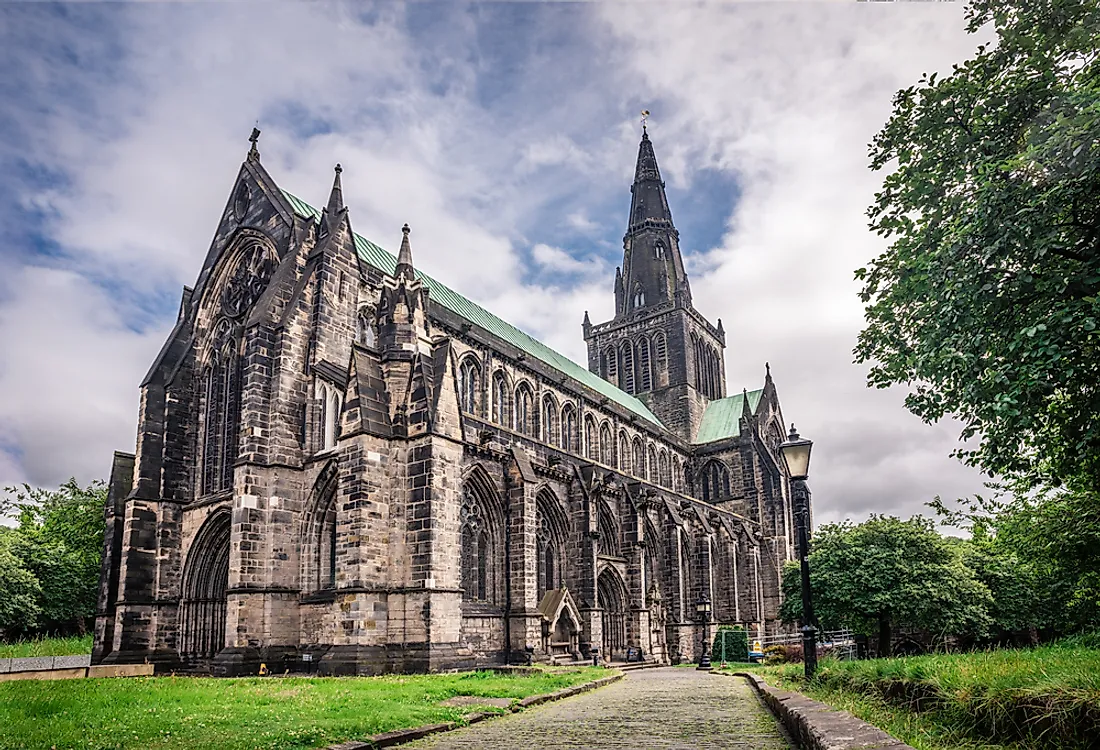Glasgow Cathedral - Notable Cathedrals

Glasgow Cathedral is the present day gathering place of Glasgow’s church-of-Scotland, which is a part of the Presbytery of the city. Located on the eastern side of the cathedral street and the northern part of the High road, the cathedral is one of the most beautiful medieval buildings in Scotland. In fact, it is the only Scottish mainland building which survived the 1560 reformation. Also known as St Mungo’s, St Kentigern’s Cathedral, or the Glasgow High Kirk, the church was constructed on the spot of St Kentigern's tomb and it marks the birthplace of Glasgow.
History
The cathedral’s origin is connected to the birth of the city, and the current location is where St Mungo constructed his church. The Glasgow High Kirk was erected during the late 12th century before the Reformation, and it served as the Bishop’s seat and later the Archbishop’s seat. The structure is a perfect example of the Scottish architecture style. James IV sanctioned the perpetual peace treaty with the United Kingdom at the church’s altar on December 12, 1502.
The High Kirk and some of the nearby castles played a crucial role in the Glasgow battles of 1544 and 1560. To help with the upkeep of the cathedral, James VI gave part of the income from some of the lands to the Kirk on April 22, 1581. Although it is not a cathedral since it has not served as the Bishop’s seat since 1960, it still is used as an active Christian worshiping place just like most of the pre-reformation kirks. The Glasgow University originated from the classes held in the precinct of the Kirk. Bishop William Turnbull founded the university in 1451. The Kirk’s bishops served as the campus chancellors for approximately 200 years.
Unique Features
The cathedral has a stone spire and tower which were added to the building after the wooden tower collapsed. During the early 1400s, a lightning attack destroyed the wooden steeple, and Bishop Lauder rebuilt the current tower. Bishop Cameron, his successor, added the Octagonal spire on the building. The chapel and the tomb of St Mungo are in Kirk’s crypt. The diocese planned to install the stained glass windows in 1856, and the Munich artist painted the first glasses. By 1930’s the windows had deteriorated and needed to be replaced, therefore the Scottish artists worked on them for 30 years. In fact, only two Munich windows are still installed, and three more are on display.
Conservation
The High Kirk was built in the 13th century, and after several centuries some parts of the building had fallen apart, and this prompted the conservation work which started during the 1990’s. The project involved replacement of all the stones which had eroded over time. The masons used stones resembling the original stone used by the medieval stonemasons. The restoration process also involved removal of the pollution encrustation and even re-pointing them using lime mortar. The experts also curved new pinnacles, window tracery, and gargoyles. Conservation of the east-end part of the building ended during the early 2000s and over 200 headstones were installed from 2008 to 2011. The conservation work is not yet completed.











